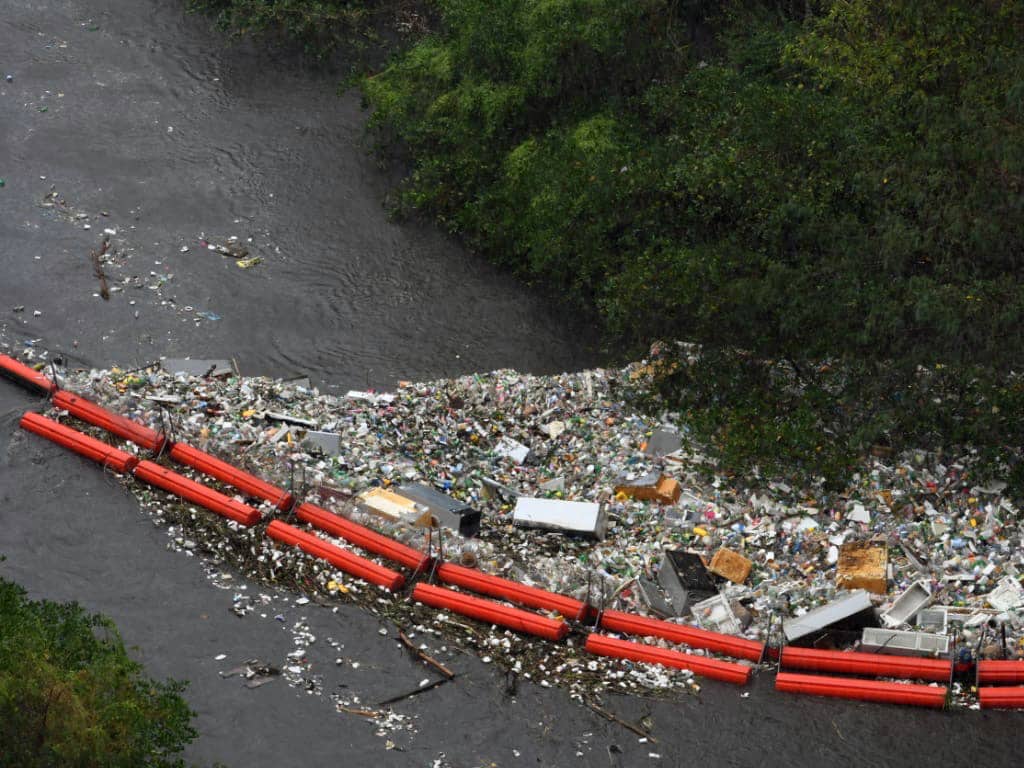

- innovation
2019
2020

2019
2020
In 2019, we took the first major step to confront plastic pollution in rivers with the installation of B.o.B (Barrera o Basura) in the Matías Hernández River.
This innovative floating system was designed to intercept solid waste carried downstream, preventing it from reaching mangroves and the ocean.
B.o.B marked the beginning of a new era in Panama’s environmental management, a practical, visible, and local solution to a global challenge.
The system, previously tested in other countries, quickly proved to be effective in Panama as well.
With the first heavy rains in April 2019, B.o.B trapped tons of waste, which were then collected and sorted by the Marea Verde team.
By the end of that year, the barrier had filled over 10,000 jumbo bags, equivalent to more than 70 tons of waste.
Among the collected items were refrigerators, tires, strollers, suitcases, and even three-meter-long industrial pipes used in aqueduct and sewage systems.
As rainfall increased and more debris flowed downstream, the team made structural improvements to enhance the barrier’s performance.
A second containment line and upstream nets were added, expanding B.o.B’s ability to capture floating waste and protect the surrounding ecosystem.
During the dry season of 2020, the barrier captured less waste due to the lack of rain to carry debris into the river.
But with the first rains in April, B.o.B once again filled with trash, revealing the scale of the problem and reinforcing the need for lasting, systemic solutions.
B.o.B operated until July 2020, and in just a year and a half, it successfully intercepted over 100 tons of waste that would otherwise have reached the coast and the sea.
More than just a barrier, B.o.B represented the beginning of a vision a city capable of reclaiming its rivers and preventing pollution at its source. Its success inspired the creation of more advanced technologies, such as the hydraulic wheel Wanda Díaz, and paved the way for broader initiatives like Siete Cuencas.